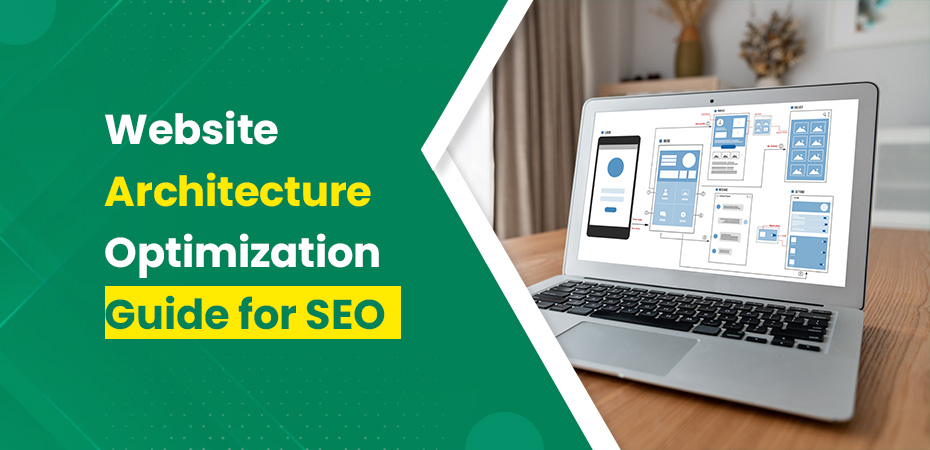Website Architecture Optimization Guide for SEO



Optimizing a website’s architecture is a vital component of Search Engine Optimization (SEO). It helps in boosting search rankings, enhancing the user experience, and facilitating web crawlers to comprehend and index your site efficiently.
Understanding Website Architecture Basics
A website’s architecture is akin to a building’s structure. Just as the latter provides a clear pathway to various sections of a building, the former ensures seamless navigation within a website. The digitally-defined architecture can be divided into three primary components:
- Site structure (the way content pages are organized and linked)
- URL structure (the naming and structure of pages)
- Navigation menus (the way users move around a site)
An optimal architecture of websites facilitates users and search engines to find what they’re looking for, enhancing user experience, and increasing dwell time, which indirectly boosts SEO.
Impact of Website Architecture on SEO
Search engine optimization (SEO) for websites is crucial for enhancing their visibility online. One fundamental aspect that affects a website’s SEO is its architecture. The algorithm used by Google, for instance, factors in numerous elements when crawling and ranking a site. These elements encompass an extensive range of aspects – from keyword usage to the speed at which your website loads.
Website architecture plays a pivotal role in determining how well your site performs in terms of SEO. Here’s why:
Speed of Indexing
Your website’s architecture can affect how quickly search engines can find, crawl, and index your site’s content. When your website is designed and arranged logically, search engines can more easily understand and categorize your content. This enhanced understanding drives quicker indexing, which in turn means your website pages pop up in search engine results much quicker, potentially driving more traffic to your site.
Improved User Experience
Website architecture also has a significant influence on user experience. If your site is constructed in a way that makes it easy for users to find what they’re looking for, they’re likely to spend more time on your site and visit more pages. Both these factors are indications of a strong user experience, which is a significant criterion for search engines when ranking websites. Hence, a well-structured website can boost your spot in the search engine results pages (SERPs).
Distribution of Link Equity
Link equity, often referred to as “link juice,” is a crucial factor in SEO. It relates to the notion of passing ranking power from one page to another within your website. Effective website architecture ensures that link equity is distributed evenly across all pages of your site, not just concentrated on your homepage. This distribution encourages search engines to crawl and rank all the pages of your site, not just the predominantly linked main page. This is a key consideration for better SEO performance and achieving higher site ranks.
The infrastructure of your website can greatly affect its SEO performance. Efficient and strategic website architecture facilitates easier indexing, improves user experience, and contributes to optimal link equity distribution, all of which are crucial for solid SEO
The Significance of Website Structure for Improved SEO
Easing the Work of Search Engines
Optimizing your site’s structure plays an indispensable role in making the tasks of search engine bots simpler. These bots are responsible for scanning and indexing your site’s pages. Essentially, a well-designed and easy-to-navigate website means these search engine crawlers can locate, and hence, list more pages from your website. As a result of this, your site’s visibility gets a significant push when users perform searches on search engines.
- Improved site structure facilitates search engine discovery and indexing
- Greater website visibility on search engines.
Enhancing User Experience
A well-structured website doesn’t only appeal to search engine robots ‒ it also provides an inviting and user-friendly experience to visitors. If your website is logically organized and easy to navigate, visitors can find what they’re looking for without much effort. A site that’s clearly readable and functional encourages users to stay longer, creating a lower bounce rate. Search engines favor websites that can engage their visitors effectively ‒ so this all feeds your SEO performance positively.
- Promotes easy navigation and readability for site visitors
- Encourages visitors to stay longer, reducing bounce rate
- Boosts SEO by enhancing user engagement.
Efficient Utilization of Internal Links
Investing time and careful planning in your website’s structure can help you harness the full potential of internal links. These links are the ones that thread together different sections of your website. They make the site more coherent and help search engine bots understand the relationships between your site’s contents. This, in turn, can supercharge your SEO efforts, making them far-reaching. You can also learn more about this by reading guides on how to effectively use internal links for SEO enhancement.
- Strategic planning of website structure makes the best use of internal links
- Guides search engine bots to understand your site’s content relevancy
- Further strengthens your SEO strategies.
Detailed Strategies to Optimize Website Architecture
Simplifying Site Hierarchies to Optimize User Experience
In the pursuit of enhanced user experience and smoother navigation, simplifying site hierarchies is imperative. Having a clear, concise, and well-structured hierarchy not only makes navigation less tedious for users but also simplifies the job for search engine bots in understanding and indexing the website. Key point to consider: – Aim for a hierarchy that is shallow and broad, meaning most, if not all, pages should be reachable within a sporadic few clicks. This guarantees minimum effort or strain for the user in finding the content they seek.
Maximizing Usability with Breadcrumbs
Breadcrumbs, also known as secondary navigation system, act as a trail of links that leads users from the current page to the home page, thereby offering a straightforward method to understand and navigate the website structure. Particularly in complex websites with numerous pages, breadcrumbs can boost usability substantially. Key point to consider: – Besides aiding navigation, breadcrumbs can intensify the website’s SEO by providing more internal links, which search engines favour.
Constructing SEO-friendly URLs for Better Rankings
The creation of URL’s is also a critical component of website optimization, URLs that are simple to read, contain relevant keywords directly increase the probability of a higher ranking in search results. Additionally, these URLs give visitors a clear idea of what the webpage holds even before they click it.
Optimizing Website for Mobile to Reach Wider Audience
With the overwhelming increase of mobile internet traffic, ensuring that your website architecture is mobile-friendly has never been more pressing. Websites that can adapt to different screen resolutions – desktop, tablet, and especially mobile – offer unmatched user experience and higher user engagement. Why this is crucial: – Apart from improving the user’s interaction with your site, a mobile-ready site positively impacts your SEO, contributing to an improved search engine ranking.
Common Mistakes to Avoid
Creating Too Many Categories
One pitfall several website owners stumble into is developing an excessive number of categories. Doing this can create confusion for your website’s users. They may find it difficult to locate exactly what they need, which may lead to frustration and eventually driving them away. More so, search engines may struggle to crawl through your website for indexing, given the large number of categories. This can negatively impact your search engine visibility. Hence, practicing restraint in creating categories may yield better results. The old axiom holds true here, “Less is often more.” Your aim should balance giving your users a well-structured, easy-to-navigate site while at the same time, allowing search engines to effectively index your site.
Ignoring Internal Linking
Another common oversight is neglecting the importance of internal linking. This is a crucial aspect that boosts your website’s health by improving site navigation and spreading link power evenly throughout your site. Having several well-placed internal links can guide your visitors through a well-structured path, improving their interest and engagement. Additionally, search engines can also crawl through your site more efficiently when there is a good internal linking structure – enhancing your visibility and search result rankings .
Overlooking Mobile Compatibility
Lastly, a mistake you cannot afford to make is ignoring mobile compatibility. With the prevalent use of mobile devices these days and Google’s preference for mobile-friendly websites, it’s more important than ever that your website is optimized for mobile users. This means that regardless of whether a user is on a desktop, tablet, or mobile phone, your website layout should function properly. Interestingly, it doesn’t just stop at functionality but also extends to aesthetics – ensuring that the interface looks and feels great across all devices is essential.
Conclusion
Improving the setup of your website can make it better in many ways for SEO, like showing up in search results, giving users a good experience, and helping search engines find and list your pages. Techniques that use data, like making the website hierarchy simpler, using breadcrumbs, and building URLs that work well for SEO, can really help to make your website better.
Want to take your website to the next level? Get in touch with SEO Expert New York today!
Frequently Asked Questions (FAQs)
Architecture of a site refers to the way your website is structured. It includes the arrangement of your web pages and how they are linked together through navigation menus and internal links.
Website architecture is significant for SEO as it affects user experience, page rankings, and site crawlability. A well-structured website is easier to navigate and index, ultimately resulting in improved search visibility.
To make your website architecture SEO-friendly, simplify the site hierarchy, ensure easy navigation, optimize URLs with relevant keywords, and make your website mobile-friendly. More details can be found in our informative blogs.
Breadcrumbs assist users in understanding their current location on a website. They also offer additional internal links and improve the discoverability of web pages by search engine bots, enhancing your website’s SEO.
With increasing mobile internet traffic, a mobile-friendly web design architecture is crucial. It improves user experience and engagement, influencing SEO positively. For additional insights, check our ultimate guide to web accessibility at Understanding WCAG.